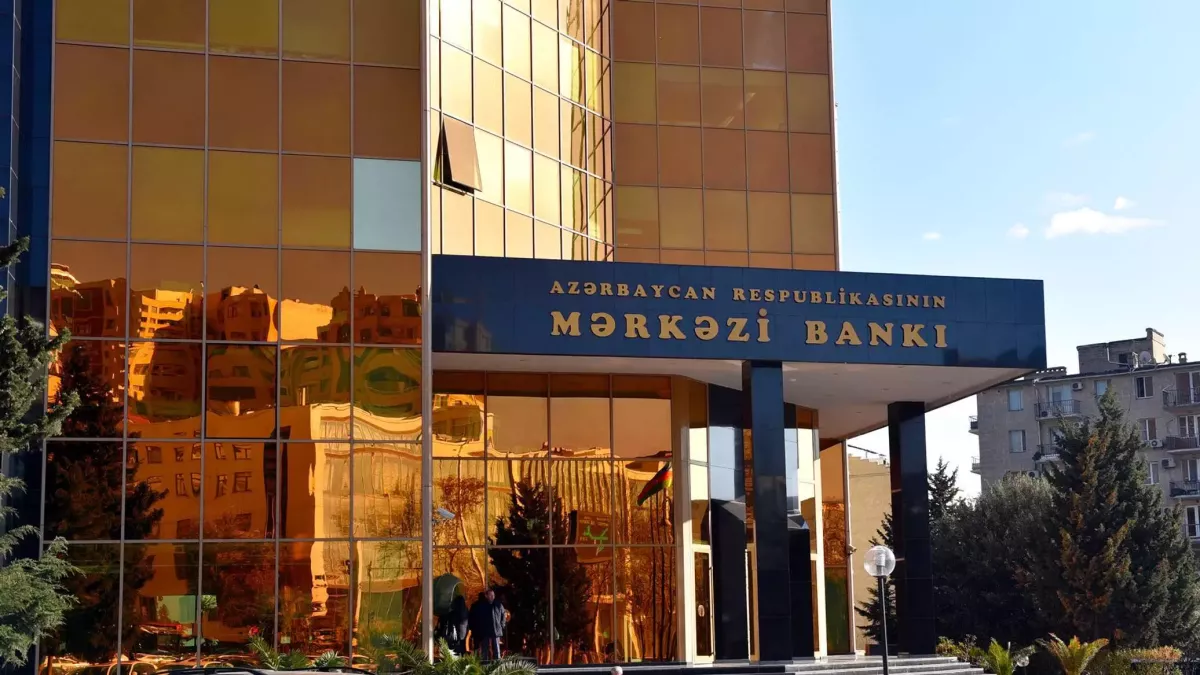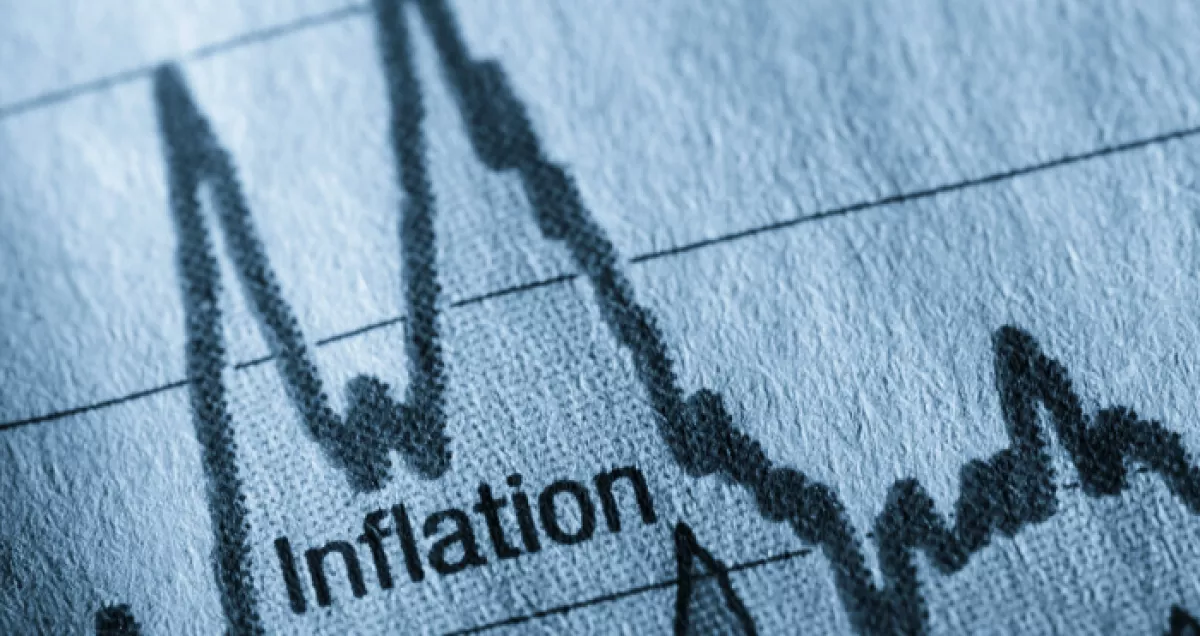Azerbaijan: Financial stability and inflation expectations Experts offer divergent projections for 2025
Since the beginning of the year, the global economy has been under pressure from a number of negative factors stemming from the intensifying global trade confrontation. The increase in U.S. import tariffs, along with retaliatory measures by China and EU countries, has led to a decline in oil prices. Industrial production is falling in many countries, macroeconomic indicators are deteriorating, and risks to monetary stability and rising inflation are increasing.
As part of the global economy, Azerbaijan is also susceptible to these challenging external developments. Nevertheless, according to calculations by the Central Bank of Azerbaijan (CBA), it is still premature to speak of any dangerous impact of these external factors on the national economy and financial system.
On the eve of the latest meeting, the Board of the Central Bank of Azerbaijan (CBA) once again decided to keep the discount rate unchanged at 7.25%. The upper and lower bounds of the interest rate corridor also remain at 8.25% and 6.25%, respectively.
It is worth noting that, with global inflation expectations declining since the beginning of 2024, many countries have shifted their focus towards improving GDP growth dynamics and boosting investment and banking activity. As a result, regulators in leading economies have gradually moved away from the anti-inflationary measures and tight monetary policies that dominated in 2022–2023, instead consistently lowering refinancing rates.
Following this trend, the CBA also reduced its key interest rate in several stages, bringing it down from 9% to 7.25% by June of last year. Since then, the regulator has not made further adjustments, and these indicators remained unchanged through the first quarter of the current year. Therefore, the CBA’s decision on April 23 to maintain the discount rate at its current level serves, to some extent, as an indication of the resilience of Azerbaijan’s present macroeconomic situation.

“It is still too early to assess the impact of U.S. tariff policy on Azerbaijan, as our trade volume with the United States is not particularly large and the tariffs have increased by around 10%,” said Taleh Kazimov, Chairman of the Central Bank of Azerbaijan (CBA), during a press conference on April 23. “There may be an indirect impact, but a full evaluation of this effect will take time. Today, a number of European and Asian countries, faced with high tariffs, are beginning to focus on new markets, which could lead to increased supply and a decline in prices.”
The Central Bank chief noted that, overall, the tariff war is unlikely to cause a sharp rise in prices in Azerbaijan, and no such effect is expected. At the same time, domestic producers could increase their export volumes by offering similar goods that meet the new market requirements.
According to mid-April estimates by analysts from the Netherlands’ leading banking group, ING Group, Azerbaijan is largely shielded from the direct impact of U.S. trade tariffs and is only partially vulnerable to indirect consequences. The country’s macroeconomic situation remains broadly stable, including the national currency—the manat—which has maintained its stability. This is attributed to Azerbaijan’s substantial foreign exchange reserves and the presence of fiscal buffers equivalent to 100% of GDP.
As for the indirect factors, risks are mainly associated with the country’s dependence on trade with China and the EU. Analysts also highlight Azerbaijan’s sensitivity to fluctuations in oil prices and the growing pressure from imported inflation. Nevertheless, even in this regard, Azerbaijan is in a relatively strong position: to maintain a balanced budget and current account in 2025, it would suffice for the average annual oil price to remain at $63–64 per barrel.
The stability of Azerbaijan’s core macroeconomic indicators is also reflected in the updated inflation forecasts released on April 23 by the Central Bank of Azerbaijan (CBA) for the current and following years. According to the regulator, annual inflation is projected at 5.3% in 2025 and 4.3% in 2026. For comparison, in January of this year, the CBA had forecasted inflation at 5.5% for 2025 and 3.8% for 2026. This means the projection for the current year has slightly improved, although risks for the following year have increased.
Meanwhile, Azerbaijan’s Ministry of Economy expects average annual inflation to stand at 5.1% in the current year and to decline to 4.3% in the next.
“In general, the current monetary policy is aimed at keeping inflation within the target range and stabilising inflation expectations. Under the existing policy framework, the baseline forecast scenario—that annual inflation will remain within the target range of 4±2% in 2025 and 2026—remains unchanged,” the Central Bank emphasised.
According to the regulator, the primary factor driving price growth is linked to Azerbaijan’s trade partners. In 2025, this external influence could add 2.57 percentage points (p.p.) to domestic inflation, and 1.74 p.p. in 2026. Domestic consumption by both the government and households may exert inflationary pressure of 1.5 p.p. this year and 2 p.p. next year. Additionally, government budget expenditures are projected to contribute a further 0.43 p.p. to inflation in 2025.
Notably, analysts at ING Group expect Azerbaijan’s average annual inflation in 2025 to be 5.2%—a figure that remains unchanged from their previous forecast and closely aligns with projections from the Central Bank. According to ING’s estimates, inflationary pressure is expected to ease further in 2026, with average annual inflation forecasted at 5.1%.
Comparable inflation expectations for Azerbaijan are also cited by experts from the International Monetary Fund (IMF), who forecast average annual inflation at 5.7% in 2025 and year-end inflation at 5.2%. Even more optimistic are the analysts from international credit rating agencies S&P Global, Moody’s, and Fitch Solutions, who forecast average inflation in Azerbaijan at 4% for the current year. Meanwhile, UN specialists predict inflation at 3.6% for 2025, while the World Bank presents an even more optimistic scenario, expecting average annual inflation in Azerbaijan at just 2.3% for both 2025 and 2026—a figure that appears rather unlikely given the current realities.

One way or another, the complex global developments currently unfolding are presenting certain challenges for macroeconomic indicators. In particular, this is linked to the weakening of the U.S. dollar. Over time, a number of countries may be forced to adjust their monetary policies to prevent excessive strengthening of their national currencies—a development that could negatively affect their export potential.
Against the backdrop of the dollar’s depreciation relative to other major global currencies, the pace of appreciation of the manat’s nominal effective exchange rate is expected to slow, said Vugar Ahmadov, Director General of the Central Bank of Azerbaijan, during a press conference. Nevertheless, the CBA forecasts an overall increase of 2.2 percentage points in the nominal effective exchange rate of the manat.
As for the country’s current account balance, the CBA estimates that it will remain in surplus this year. However, while the regulator had forecast a surplus of $5.5 billion back in January, the latest projection has been revised down to $4 billion. Moreover, the surplus is expected to shrink further to $3.5 billion in 2026.
A key factor behind this downward adjustment is the global decline in energy prices, with hydrocarbons still accounting for approximately 88% of Azerbaijan’s exports. For reference, in 2024, Azerbaijan’s current account surplus stood at $4.7 billion, or 6.3% of GDP—down by 43.3% compared to 2023.
Given the unpredictability of global trade wars and the high volatility of the oil market, it is currently difficult to make precise forecasts about the near-term outlook for the domestic economy.
“We expect the average annual price of oil to be slightly above $70 per barrel in 2025, and our forecast for the following year is roughly the same. However, it will take time to provide a more accurate assessment,” said Central Bank Chairman Taleh Kazimov. He also noted that the projected price for natural gas stands at approximately $304.








